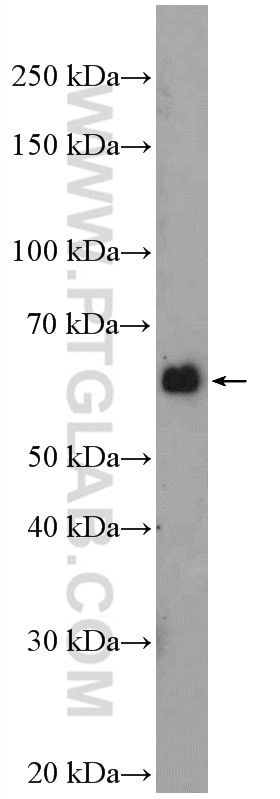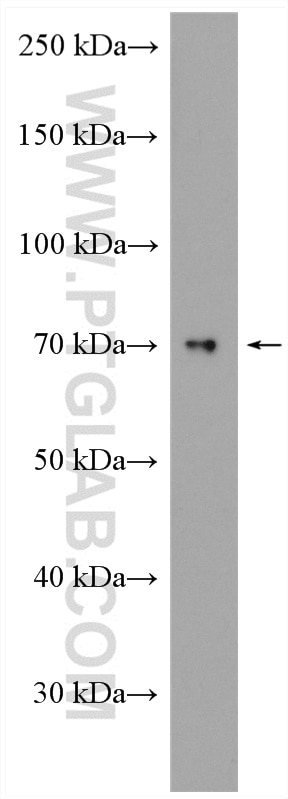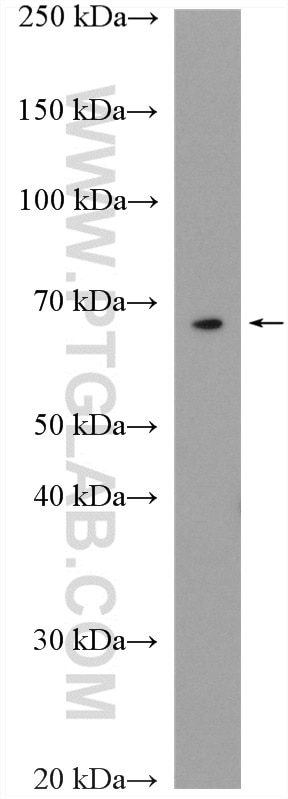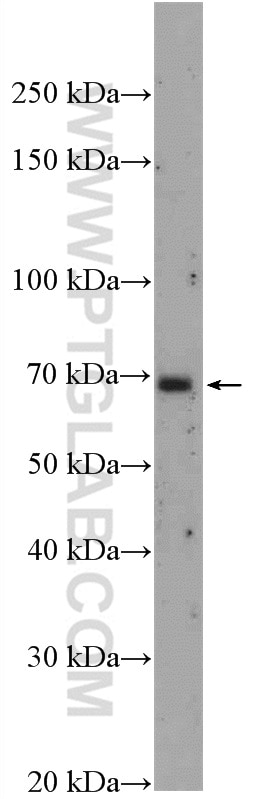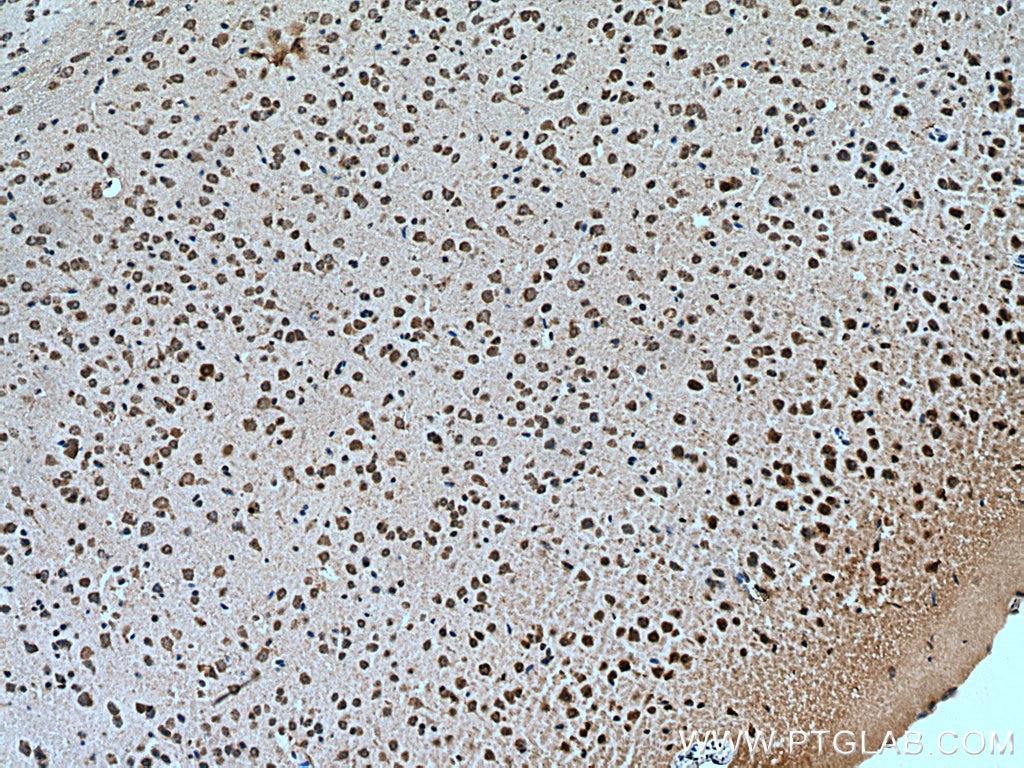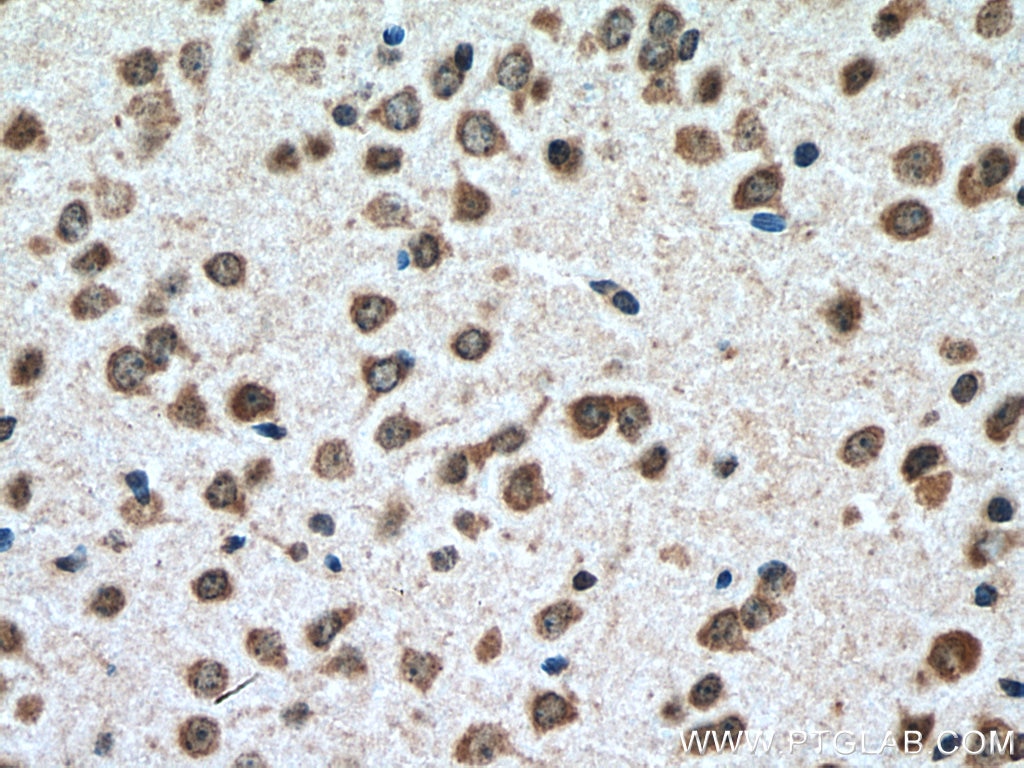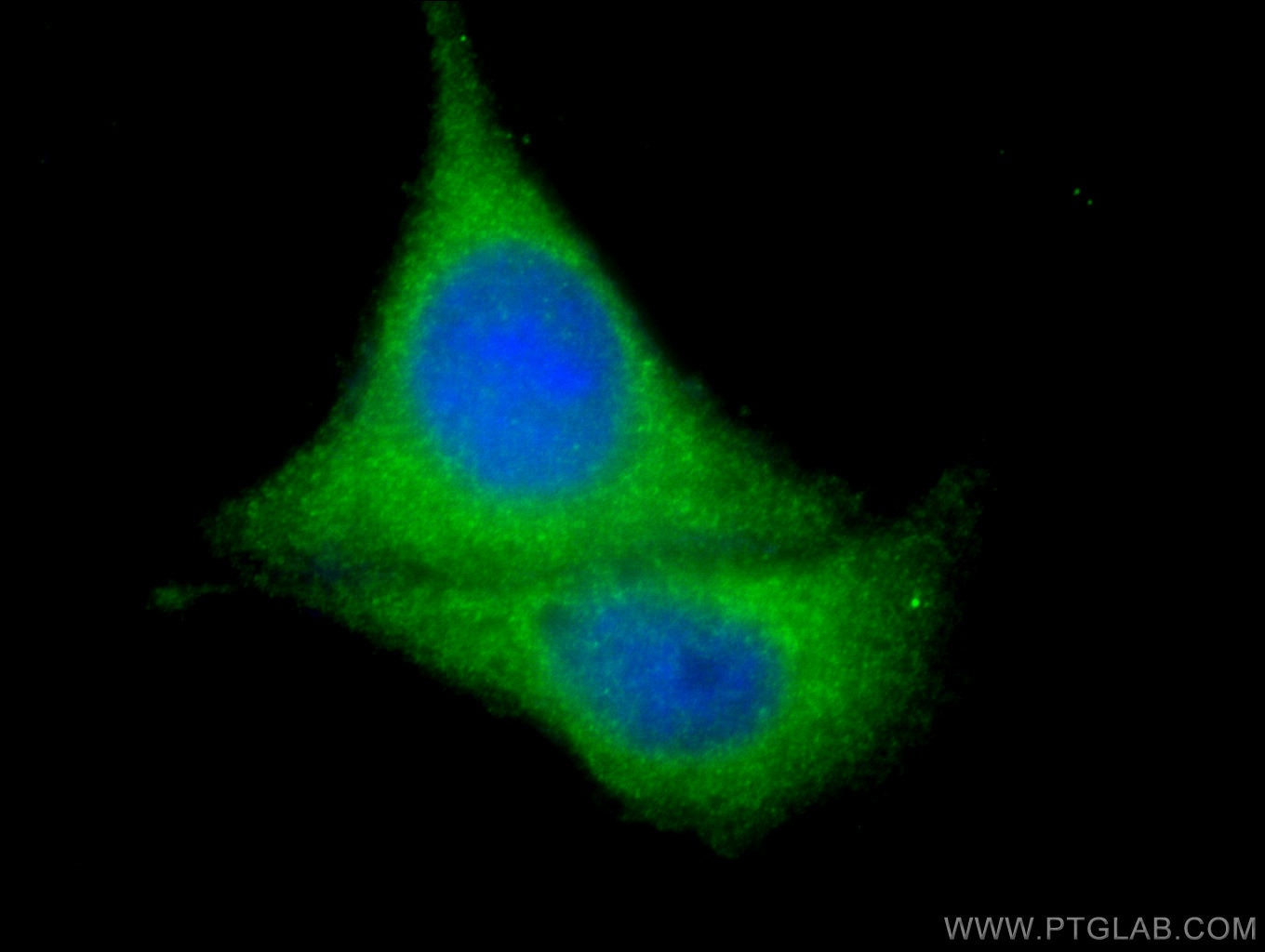- Phare
- Validé par KD/KO
Anticorps Polyclonal de lapin anti-ATG14/Barkor (N-terminal)
ATG14/Barkor (N-terminal) Polyclonal Antibody for WB, IHC, IF/ICC, ELISA
Hôte / Isotype
Lapin / IgG
Réactivité testée
Humain, souris et plus (4)
Applications
WB, IHC, IF/ICC, IP, ELISA
Conjugaison
Non conjugué
N° de cat : 19491-1-AP
Synonymes
Galerie de données de validation
Applications testées
| Résultats positifs en WB | cellules HEK-293, cellules A431, cellules NIH/3T3, tissu cérébral de souris |
| Résultats positifs en IHC | tissu cérébral de souris, il est suggéré de démasquer l'antigène avec un tampon de TE buffer pH 9.0; (*) À défaut, 'le démasquage de l'antigène peut être 'effectué avec un tampon citrate pH 6,0. |
| Résultats positifs en IF/ICC | cellules MCF-7, |
Dilution recommandée
| Application | Dilution |
|---|---|
| Western Blot (WB) | WB : 1:500-1:1000 |
| Immunohistochimie (IHC) | IHC : 1:50-1:500 |
| Immunofluorescence (IF)/ICC | IF/ICC : 1:50-1:500 |
| It is recommended that this reagent should be titrated in each testing system to obtain optimal results. | |
| Sample-dependent, check data in validation data gallery | |
Applications publiées
| KD/KO | See 2 publications below |
| WB | See 35 publications below |
| IF | See 7 publications below |
| IP | See 1 publications below |
Informations sur le produit
19491-1-AP cible ATG14/Barkor (N-terminal) dans les applications de WB, IHC, IF/ICC, IP, ELISA et montre une réactivité avec des échantillons Humain, souris
| Réactivité | Humain, souris |
| Réactivité citée | rat, bovin, canin, Humain, porc, souris |
| Hôte / Isotype | Lapin / IgG |
| Clonalité | Polyclonal |
| Type | Anticorps |
| Immunogène | Peptide |
| Nom complet | KIAA0831 |
| Masse moléculaire calculée | 55 kDa |
| Poids moléculaire observé | 65-68 kDa |
| Numéro d’acquisition GenBank | NM_014924 |
| Symbole du gène | ATG14 |
| Identification du gène (NCBI) | 22863 |
| Conjugaison | Non conjugué |
| Forme | Liquide |
| Méthode de purification | Purification par affinité contre l'antigène |
| Tampon de stockage | PBS with 0.02% sodium azide and 50% glycerol |
| Conditions de stockage | Stocker à -20°C. Stable pendant un an après l'expédition. L'aliquotage n'est pas nécessaire pour le stockage à -20oC Les 20ul contiennent 0,1% de BSA. |
Informations générales
Barkor, also named as KIAA0831, Atg14 and Atg14L, is required for both basal and inducible autophagy. It plays a role in autophagosome formation and MAP1LC3/LC3 conjugation to phosphatidylethanolamine. Barkor promotes BECN1 translocation from the trans-Golgi network to autophagosomes. This antibody is specific to KIAA0831(Barkor).
Protocole
| Product Specific Protocols | |
|---|---|
| WB protocol for ATG14/Barkor (N-terminal) antibody 19491-1-AP | Download protocol |
| IHC protocol for ATG14/Barkor (N-terminal) antibody 19491-1-AP | Download protocol |
| IF protocol for ATG14/Barkor (N-terminal) antibody 19491-1-AP | Download protocol |
| Standard Protocols | |
|---|---|
| Click here to view our Standard Protocols |
Publications
| Species | Application | Title |
|---|---|---|
Signal Transduct Target Ther Targeting CRL4 suppresses chemoresistant ovarian cancer growth by inducing mitophagy | ||
Adv Sci (Weinh) Bone Marrow Mesenchymal Stem Cell-Derived Dermcidin-Containing Migrasomes enhance LC3-Associated Phagocytosis of Pulmonary Macrophages and Protect against Post-Stroke Pneumonia | ||
Autophagy STYK1 promotes autophagy through enhancing the assembly of autophagy-specific class III phosphatidylinositol 3-kinase complex I. | ||
Dev Cell Autophagic elimination of ribosomes during spermiogenesis provides energy for flagellar motility. | ||
Autophagy Simultaneous inhibition of the ubiquitin-proteasome system and autophagy enhances apoptosis induced by ER stress aggravators in human pancreatic cancer cells. |
Avis
The reviews below have been submitted by verified Proteintech customers who received an incentive for providing their feedback.
FH Charlotte (Verified Customer) (01-25-2018) | I do not think that this antibody works properly in U2OS cells. According to the litterature ATG14 is supposed to have a diffuse or punctae pattern and not this huge accumulation near the nucleus.
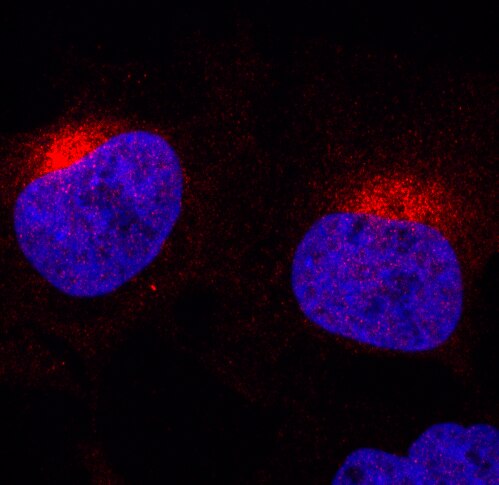 |
